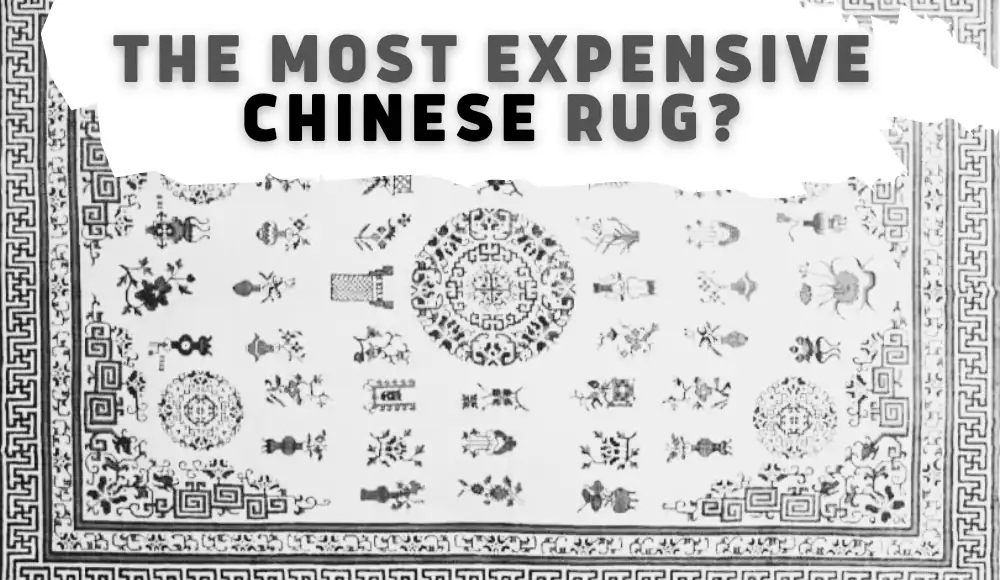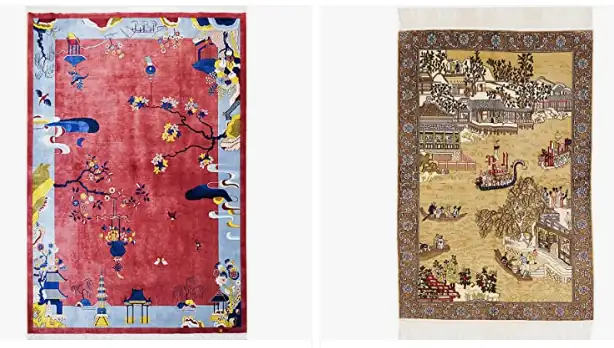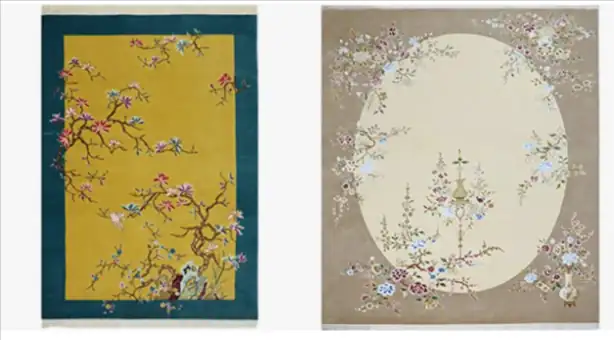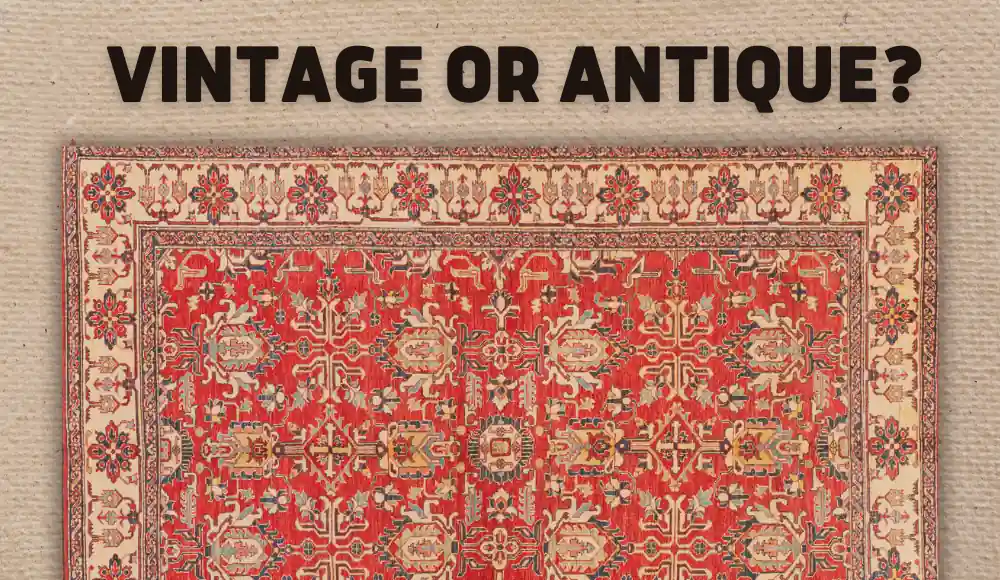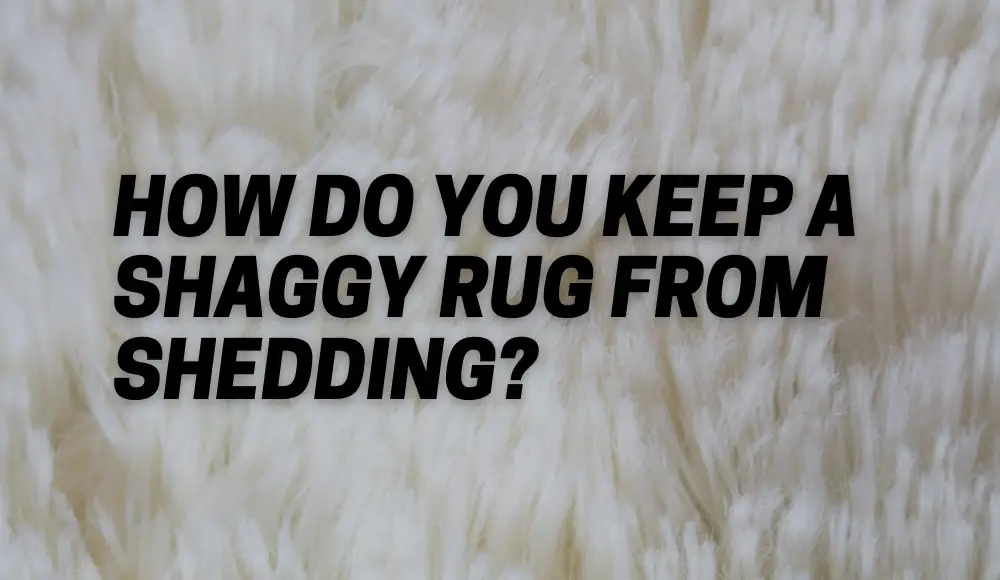Last updated on May 5th, 2023 at 04:59 am
Chinese rugs are widely recognized as some of the most valuable and sought-after rugs in the world. These rugs are admired for their exquisite craftsmanship, intricate designs, and unique cultural significance.
Over the centuries, Chinese rug makers have honed their skills to create an array of beautiful and valuable rugs that have become a symbol of luxury.
Among these Chinese woven masterpieces is the Imperial “Dragon” carpet, which holds one of the records for being the most expensive Chinese carpet ever sold. The realized price for the carpet at Christie’s auction in 2021 was $7.6 million.
The value of this magnificent piece of art is a testament to the timeless beauty and exceptional quality that Chinese rug and carpet makers are known for.
A brief overview of Chinese rugs and their value
What is the name for a Chinese rug?
First things first.
Chinese rugs are typically referred to as “Oriental rugs” or “Chinese Oriental rugs” in the carpet industry. They are known for their intricate designs, high-quality materials, and expert craftsmanship.
Chinese rugs come in a variety of sizes, colors, and patterns. They are known for their delicate weaving techniques, which have been passed down through generations of skilled artisans.
These techniques allow for intricate details in designs that are not typically found in other types of rug-making traditions.
The value of Chinese rugs lies not only in their artistic beauty but also in their rarity.
Many high-quality pieces can take years to make by hand with fine materials like silk or wool. They often tell stories through their designs or reflect cultural influences from different periods throughout China’s rich history like the already mentioned 16th-century Imperial “Dragon” carpet for the throne pedestal of the Chinese Ming dynasty.
—
Diving into the Chinese Rugs History
Origins and Evolution of Chinese Rug Making
Chinese carpet and rug-making has a rich history that dates back thousands of years.
The earliest known Chinese rugs and carpets are believed to have been made during the Tang Dynasty, which ruled in 618 – 907.
Over time, silk was introduced in China as a popular material for rug and carpet production. As known, the history of silk is more than 5 thousand years old and originates in China in the Neolithic era. As a result, China developed a reputation for producing some of the finest silk rugs in the world.
The luxury silk market expanded to Europe only in the Middle Ages.
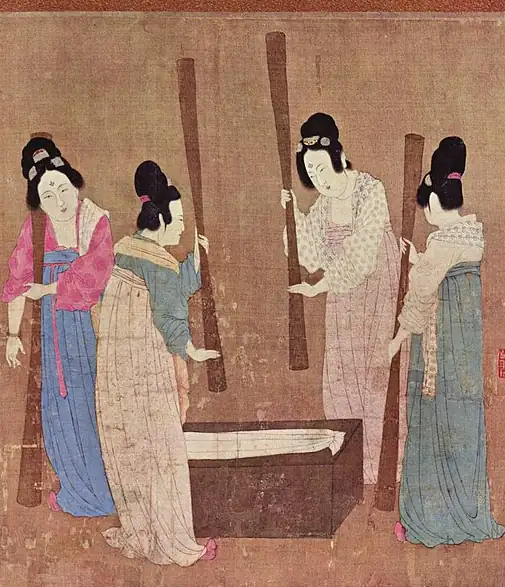
Influence of Cultural and Historical Events on Rug Designs
The designs found on Chinese rugs are influenced by cultural and historical actuality. For example, many rugs featured geometric shapes, dragons, animal motifs, and flora reflecting a symbolism of comparison that was prevalent at the time.
For instance, many rugs and carpets featured dragons and phoenixes symbolizing luck and prosperity, male and female respectively.
Overall, Chinese rugs reflect a rich cultural heritage that has evolved over thousands of years. From simple woven mats to intricate silk masterpieces fit for royalty.
Chinese rug-making continues to be celebrated around the world today.
Characteristics of Expensive Chinese Rugs
Quality Materials Used in Production
One of the key characteristics that distinguish expensive Chinese rugs from their cheaper counterparts is the quality of materials used in their production.
Top-tier rugs are typically made from high-quality fibers such as silk, wool, or a blend of both. These materials are carefully sourced and selected for their durability, softness, and sheen.
Silk is often considered the most luxurious material for rug-making due to its softness and natural luster. However, it is also more delicate and less durable than wool.
Wool, on the other hand, is known for its strength and durability, making it a popular choice for rug-making. A blend of these materials can create a beautiful feel with excellent durability.
Intricate Designs and Patterns
Another characteristic that sets expensive Chinese rugs apart from cheaper ones is their intricate designs and patterns. These designs often incorporate traditional motifs such as dragons or lotus flowers, which have cultural significance in China.
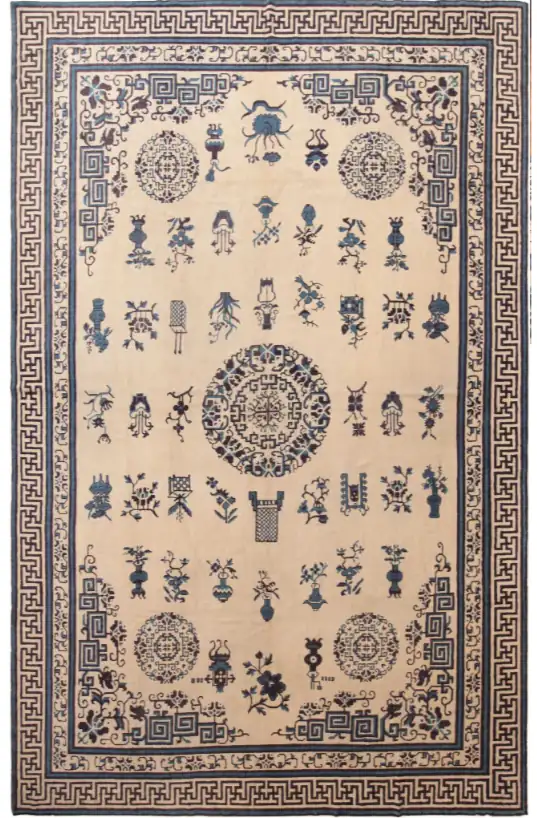
Many high-end Chinese rugs also feature intricate weaving techniques such as hand-knotting or tapestry weaving to create detailed patterns with varying textures. This level of craftsmanship requires a great deal of skill and attention to detail which contributes to the overall value of the rug.
Rare Colors and Dyes
The colors used in high-end Chinese rugs are often rich and vibrant due to the use of rare dyes that are difficult to obtain or produce. These dyes may be derived from natural sources such as plants or insects, which require careful harvesting and processing. Overall, the practice of using plants, barks, and insects for dyeing purposes in China has been documented for over 5,000 years.
Some examples include indigo blue made from dyer’s knotweed plant or purple dye made from purple gromwell. Crimson and scarlet colors were extracted from the lac-producing insects.
These characteristics play an important role in defining what makes an expensive Chinese rug so valuable. High-quality materials, intricate designs, and rare colors and dyes are all key elements that contribute to the overall beauty and quality of these rugs.
The Most Expensive Chinese Rug
Since the legacy of ancient Chinese rugs comes from a thousand-year history, it is difficult to trace the fate of all ancient exhibits that have survived to our modern times.
Anyway, from the given open sources we know, that a 17th-century Chinese rug of the late Ming Dynasty was sold for $163 000 at the Sotheby’s auction.
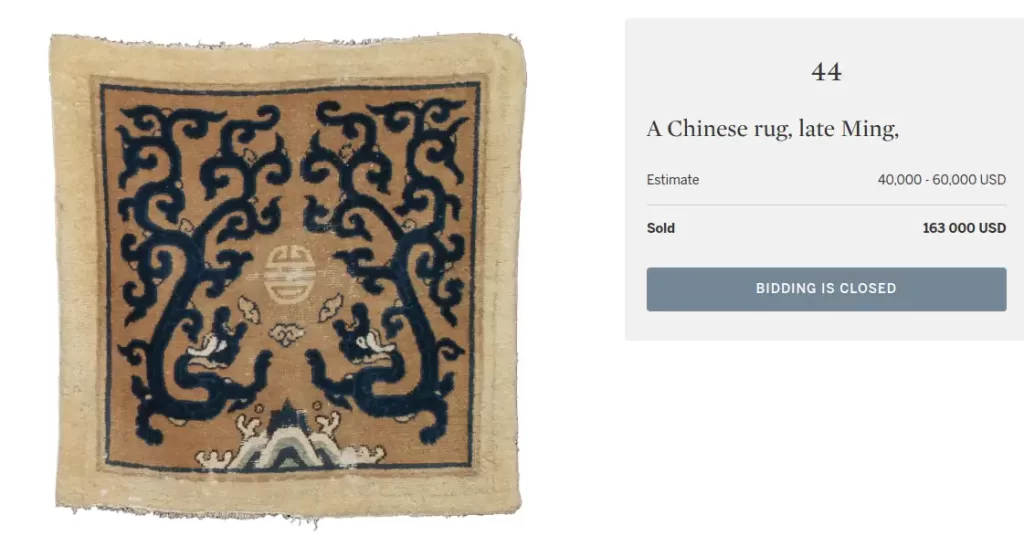
It’s almost a 4×4 ft square rug. The presence of silk warps in this rug implies that it may have been crafted for the exclusive use of aristocrats or members of the court.
Of course, the price doesn’t compare with the Imperial “Dragon” carpet sold for $7.6 million which you can also find in our list of the top 10 most expensive carpets in the world.
Today, antique and vintage collections of traditional Chinese rugs are available to exhibit and purchase not only at well-known auctions but from many different collectors and commercial antique experts.
The antique Chinese rugs value on the market ranges on average from $1500 to $25 000 and above.
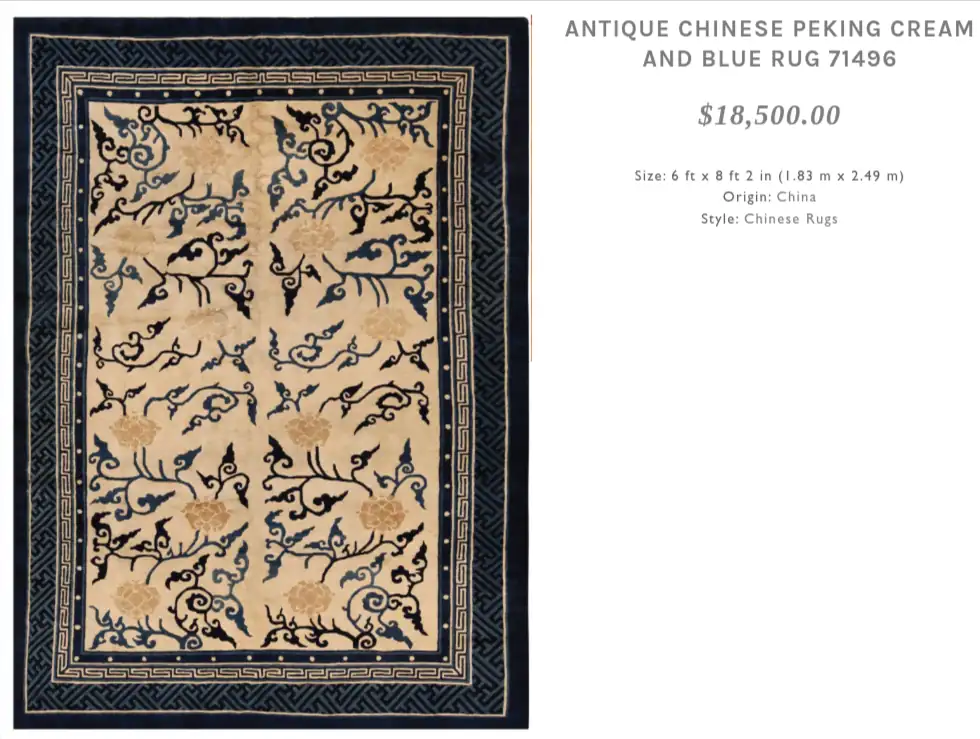
How do you know if a Chinese rug is hand knotted?
One way to determine if a Chinese rug is hand-knotted is to examine the back of the rug.
Hand-knotted rugs will have an uneven, rough back, whereas machine-made rugs will have a uniform, smooth back.
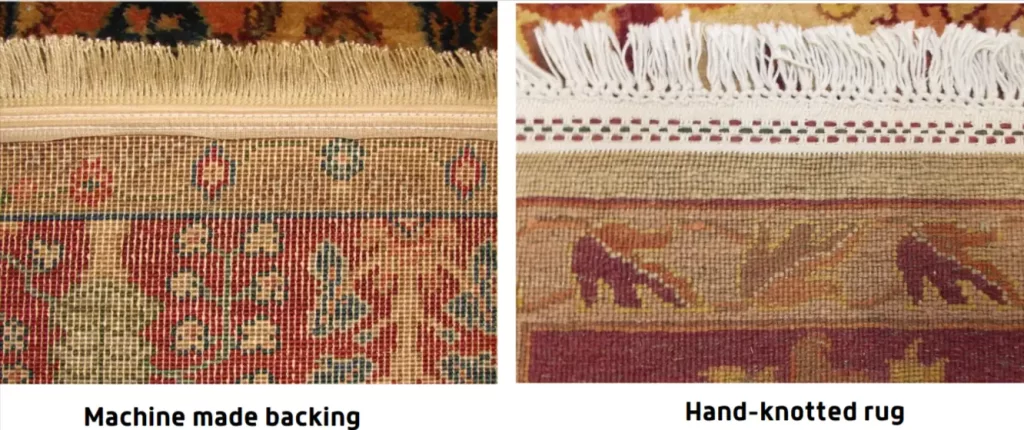
Additionally, you can also inspect the fringes on the ends of the rug. Hand-knotted rugs will have fringes that are an extension of the warp strings used in the weaving process, while machine-made rugs often have fringes that are sewn onto the rug.
Traditional Chinese rug
Finally, you can also feel the rug and inspect the knots. Hand-knotted rugs will have knots that are slightly uneven in size and may vary in tension, whereas machine-made rugs will have evenly spaced and uniform knots.
Conclusion
Final Thoughts on the Importance and Appreciation for Fine Craftsmanship in Rug Making
The making of fine-quality rugs is an art form that requires skill, patience, creativity, and attention to detail. It involves a deep understanding of materials such as silk or wool that go into the production process.
Beyond this technical expertise lies an appreciation for the beauty that comes with a well-made rug.
Fine craftsmanship in rug making also reflects a cultural heritage that has been passed down through generations in countries like China.
Each region has its unique style of weaving technique that makes it stand out from others.
In today’s fast-paced world where automation has taken hold in many industries including manufacturing processes such as rug-making production is done by machines we must not forget to appreciate the skilled craftsmanship involved in creating something beautiful using traditional techniques passed down through generations.
